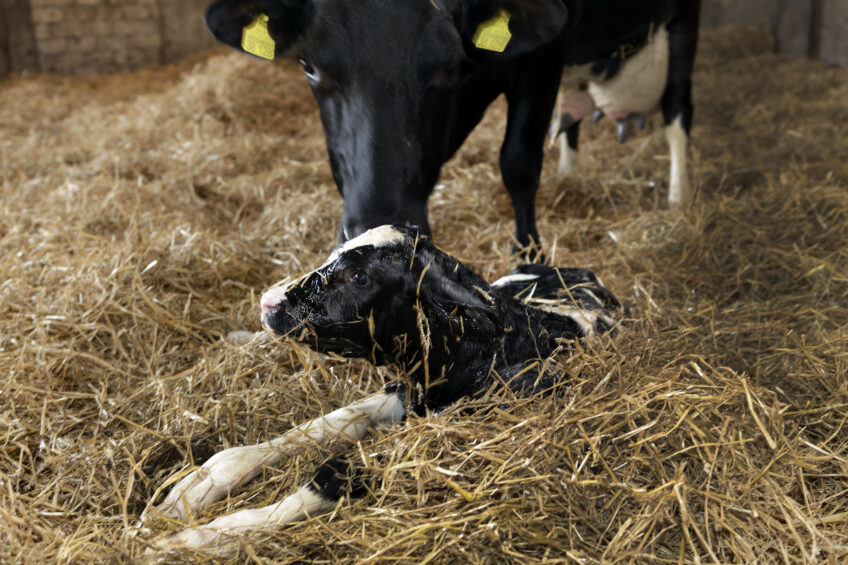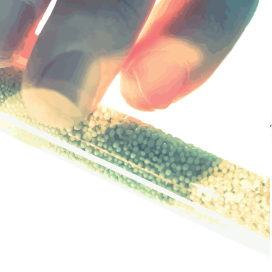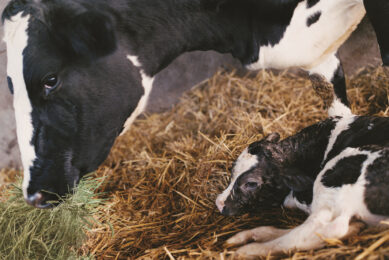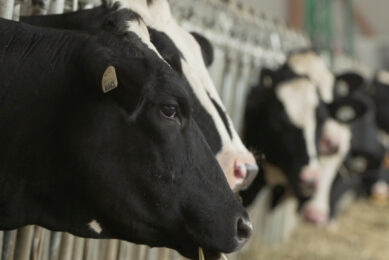Boosting reproductive performance with protected B vitamins

B vitamins are essential nutrients and their supplementation, protected from rumen degradation, represents a real opportunity for dairy producers to optimise reproductive performance. A synergy exists between the vitamins and the dietary supplementation of specific rumen-protected B vitamins blends is an innovative tool: proven and practical under commercial conditions.
Although milk production has almost doubled during the last 50 years, conception rate did not improve and stayed low. Reproduction problems are the main reason for culling in dairy herds and the average reproductive performance is not satisfactory with an insemination rate of 44.1%, pregnancy rate of 17.6% and conception rate of 40.5%. It has a high economic impact on the dairy herd and savings are between US$150-200 per cow per year when pregnancy rate is increased from 15-20%.
Maintaining a healthy balance
Even if management factors, like cow comfort, heat detection etc., are involved in reproductive performance, the transition period is very challenging for the dairy cow and may impact negatively her next reproduction. Her metabolism needs to adapt rapidly from a non-lactating to a lactating stage and its reproductive system is preparing ovulation for the next breeding period. This sudden change increases the energy requirement and, since dry matter intake is not sufficient to meet this increased demand, the cow will become in a negative energy balance status (NEB).
To overcome the lack of energy intake, the dairy cow will adapt and start mobilising fat tissues so she will lose body condition. This process is common during the early lactation period however, when it becomes excessive, and the liver capacity to metabolise the extra fat upload is not sufficient, it creates health and reproduction problems. In general, each 0.5 units (scale of 5) loss of body condition score will show a decrease of 10% of conception rate. This is due to a delayed ovulation and potentially early embryonic loss so less cows are pregnant early. In fact, only 45% of the cows are pregnant at 150 days in milk (DIM) when their first ovulation is later than 50 DIM compared to 75% when they ovulate earlier.

Reduced immune function
During the transition period, the immune function is reduced, including a dysfunctional inflammation response, and the risk of contracting reproductive diseases like retained placenta, metritis and endometritis is increased. There is an additive effect of metabolic and uterine diseases occurring before breeding with anovulation and body condition loss on reproductive performance.
Benefits of protected B vitamins supplementation
Any means to alleviate the NEB of the cow, its liver function and immune response during the transition period will increase the chance of success in reproduction. Nutrition in general, plays a crucial role, including the supplementation of protected B vitamins.
Some B vitamins play specific roles in the energy and protein metabolism of the cow, the reduction of liver fat infiltration, the immune function and the follicular development. Since they are rapidly degraded by the ruminal microbes, B vitamins need to be rumen-protected when supplemented in the diet.
Studies using nutrigenomics demonstrate improved reproductive performance
Studies involving the more recent technique of nutrigenomics (the study of the interactions between nutrients and genes) to evaluate the impact of rumen-protected B vitamins on reproductive performance, were conducted with dairy cows. The expression of specific gene markers involved in follicular development, oocyte quality and embryo survival were compared between cows non-supplemented or supplemented in their transition and early lactation diets with commercial blends of rumen-protected B vitamins. In one study, the response showed that the dominant follicle was preparing earlier for ovulation and the oocyte quality was improved for cows fed the protected B vitamins.
In another study, cows fed the protected B vitamins had an enhanced expression of specific gene markers for endometrium cell immunity and adhesion. It showed a potential for an improved embryo attachment to the uterus and a better environment for its development, suggesting an enhanced early embryo survival.
The results from the nutrigenomic studies helped to comprehend better why and how reproductive performance was improved in other trials when cows were supplemented with those same rumen-protected B vitamins blends.
Further studies on protected B vitamins and reproductive performance
Dairy cows fed a protected blend of B vitamins (folic acid, riboflavin and choline) during the transition period showed better health and reproductive performance than the non-supplemented cows. Blood BHB levels were lower, which is an indicator of an improved liver function and energy balance, mastitis and metritis incidence rate was reduced and more cows were pregnant early.
A commercial trial on a large dairy farm in California confirmed the reproduction benefit of feeding the same protected blend of B vitamins during the transition period (Jefo TRR no. 7 2013). When compared to the same period of the previous year, more cows were pregnant earlier and services per conception were reduced in the protected B vitamins supplemented group. Moreover, the culling rate was reduced by 33%, and this results into a significant economic impact for the producer (Table 1).
A research study with multiparous cows supplemented with a specific blend of protected B vitamins for the lactation period (folic acid, pyridoxine, pantothenic acid, biotin and B12) showed improved reproductive performance. No voluntary waiting period or synchronization program was used in this trial in order to evaluate the effect of the B vitamins on reproduction. First service conception rate was improved by 13% in the supplemented group with the same percentage of improvement until 200 DIM (Figure 1). Since cumulative number of cows pregnant at 200 DIM was not different, it means that cows got pregnant earlier with the supplementation of the protected B vitamins blend. Of economic importance, cows receiving the B vitamins had their culling rate reduced by 20% compared to the control group.
Join 13,000+ subscribers
Subscribe to our newsletter to stay updated about all the need-to-know content in the dairy sector, two times a week.




